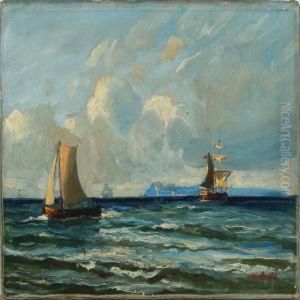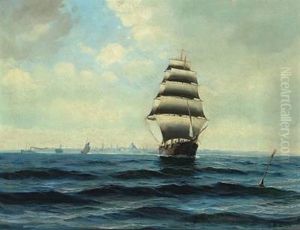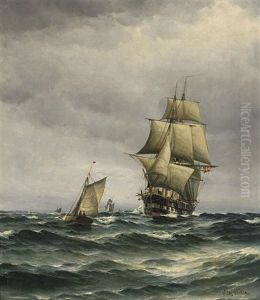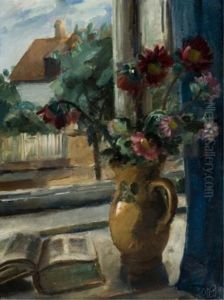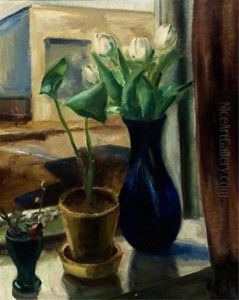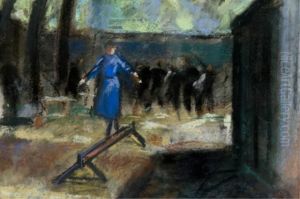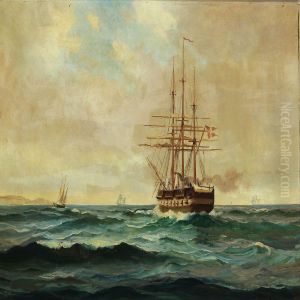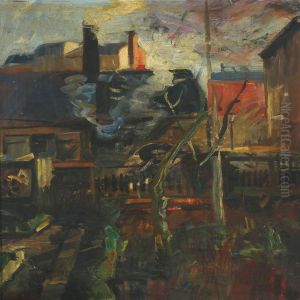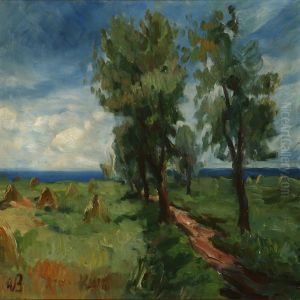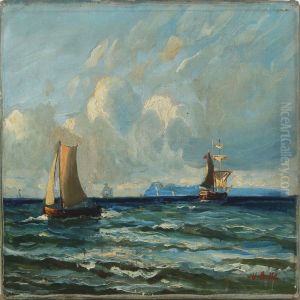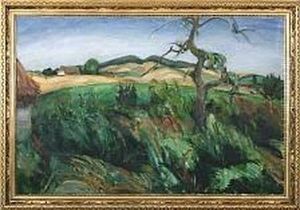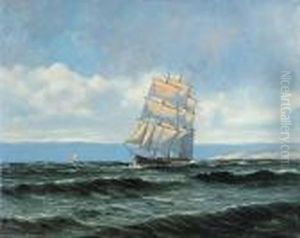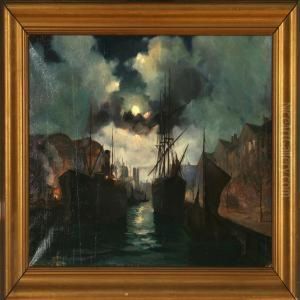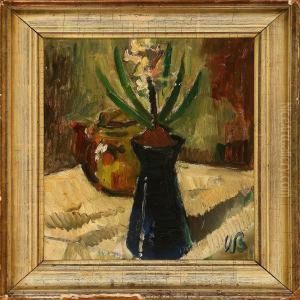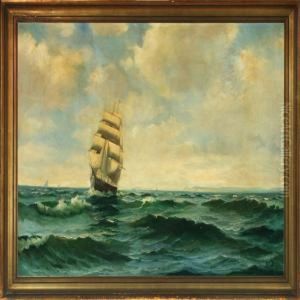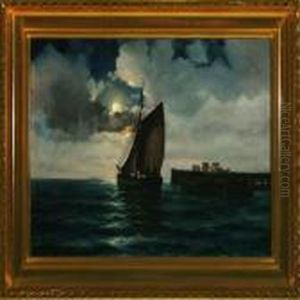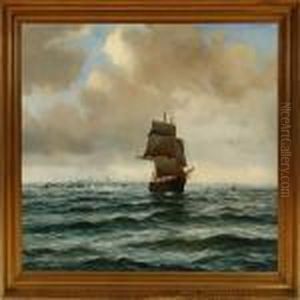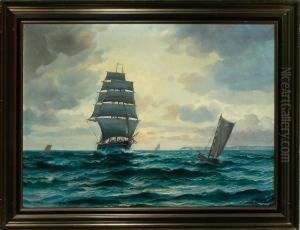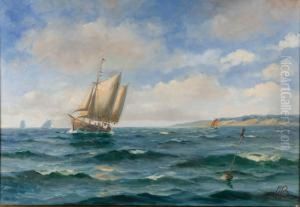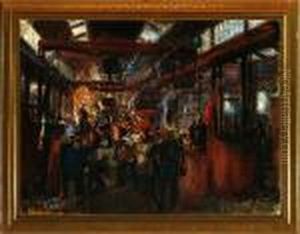Willy Bille Paintings
Willy Bille, born in Denmark in 1889, was a significant figure in Danish art, particularly renowned for his contributions to painting and illustration. His artistic journey began at an early age, leading him to study at the Royal Danish Academy of Fine Arts in Copenhagen, where he honed his skills and developed a distinctive style that would mark his works throughout his career. Bille's oeuvre is characterized by a delicate interplay of light and shadow, a trait that became a hallmark of his landscapes and scenes of everyday life.
Bille's artistic output was not confined to painting alone; he was also accomplished in the realm of illustration, contributing his talents to various publications of his time. His illustrations often carried the same sensitivity and attention to detail that were evident in his paintings, making them cherished by a wider audience. Throughout his career, Bille was involved in numerous exhibitions, both solo and group, which helped establish his reputation in the Danish art scene and beyond.
The 1920s and 1930s were particularly productive periods for Willy Bille, seeing him experiment with and refine his approach to composition and color. Despite the changing trends in art during his lifetime, Bille remained true to his vision, focusing on the beauty of the natural world and the simplicity of daily life. His works are celebrated for their poetic quality and their ability to capture the essence of a moment or scene with subtlety and finesse.
Tragically, Willy Bille's life and career were cut short by the outbreak of World War II. He passed away in 1944, leaving behind a rich legacy of art that continues to be admired for its serene beauty and technical mastery. Today, Willy Bille is remembered as one of Denmark's most cherished artists, whose contributions to painting and illustration have left an indelible mark on the country's cultural heritage.
